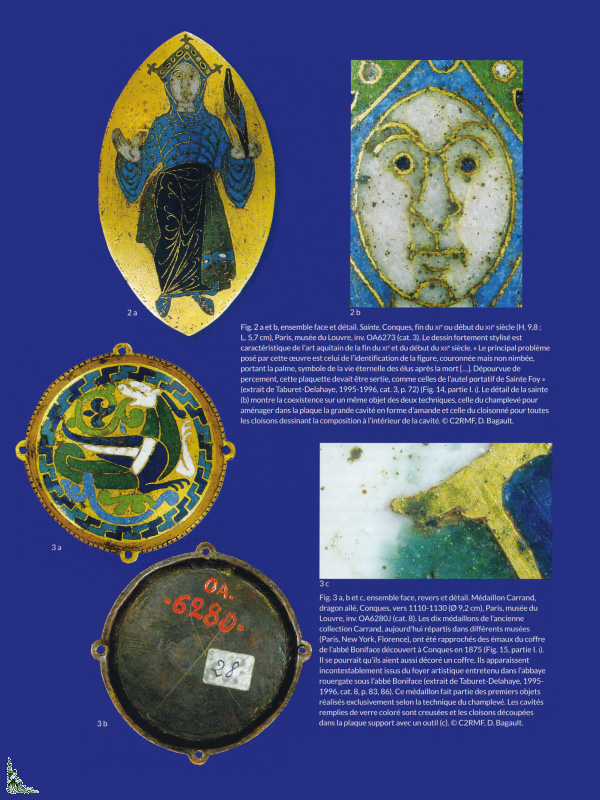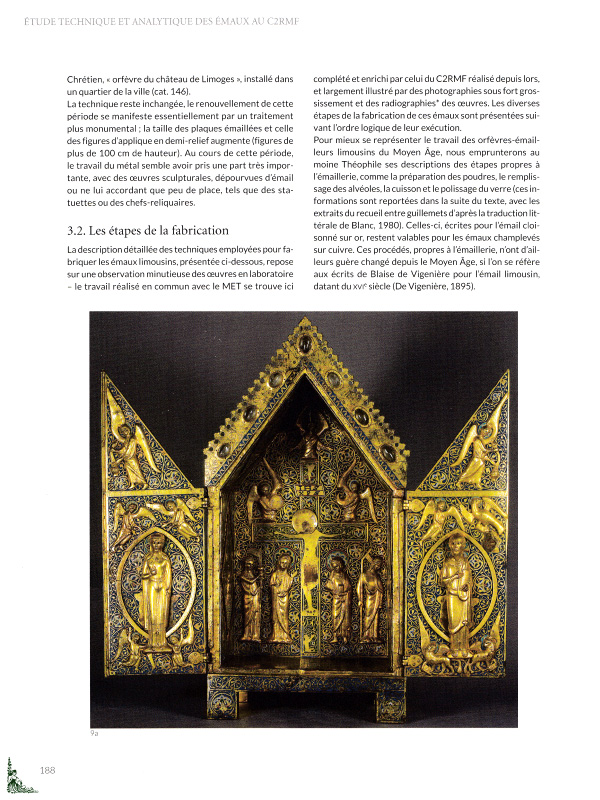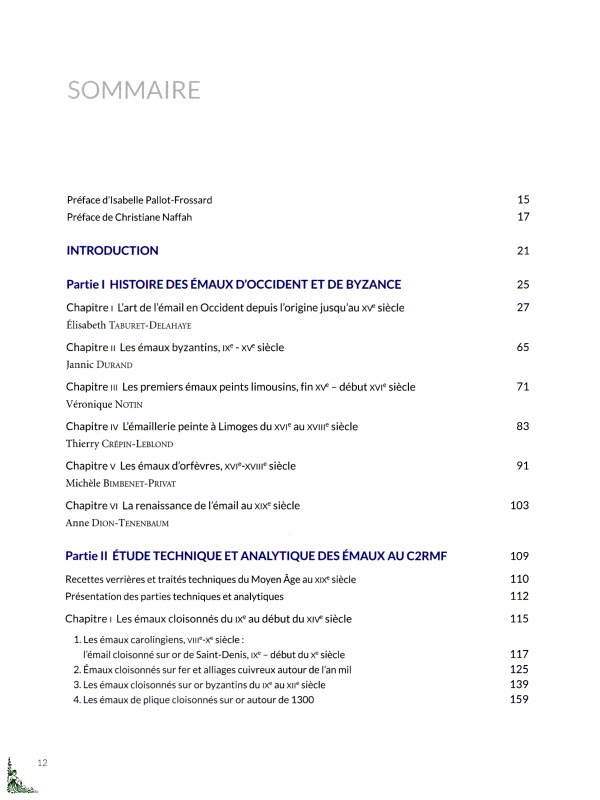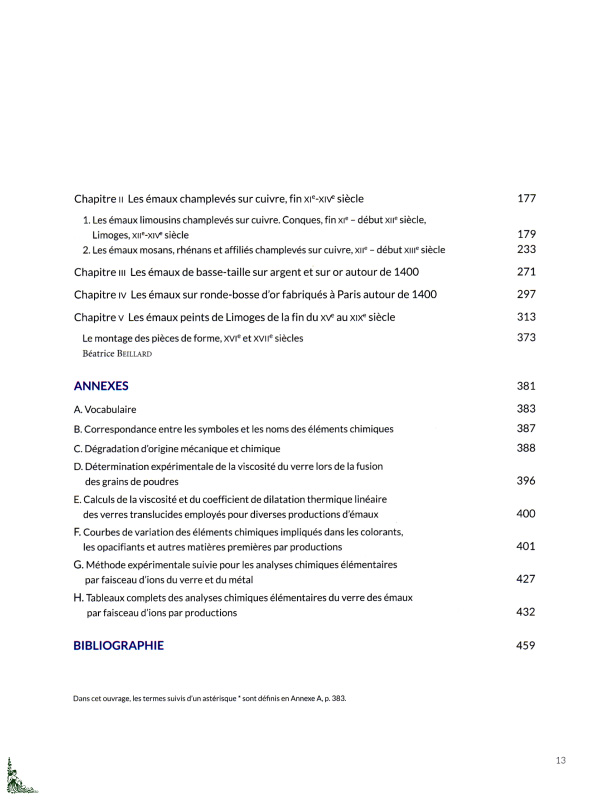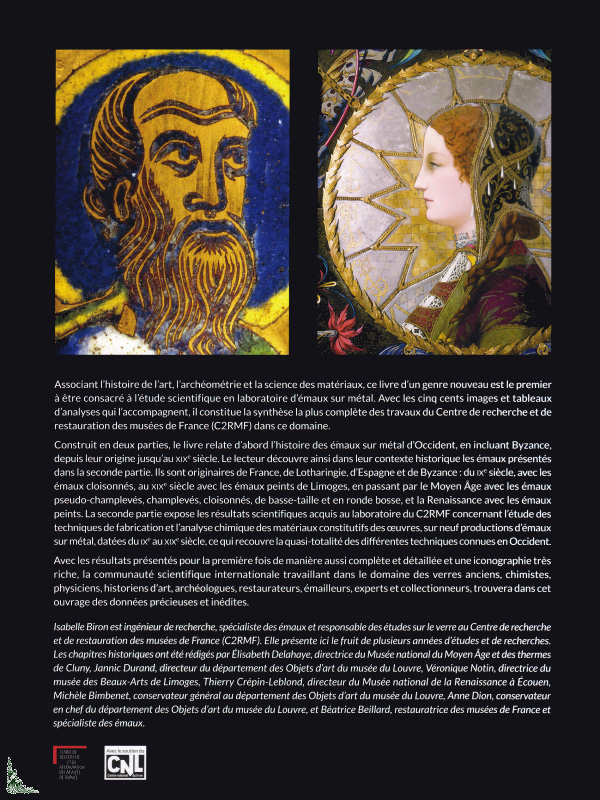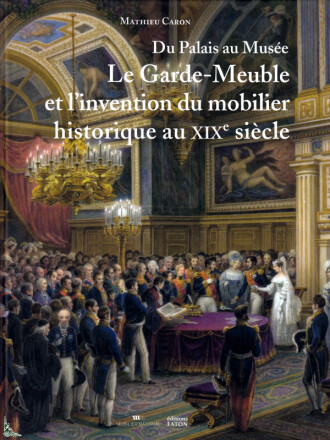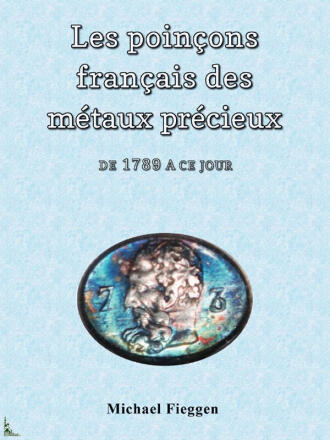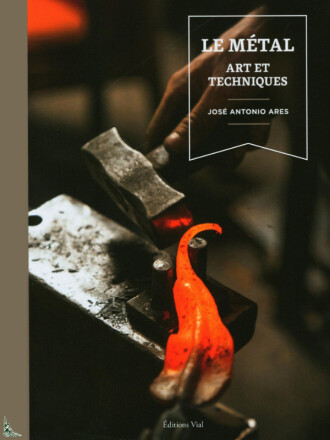Enamels on metal from 9th to 19th century, History, technology and materials
Book information
| Author : | Isabelle Biron |
| Publisher : | Faton (2015) |
| Binding : | Hardcover (480 full color pages) 8-½ inches x 11-½ inches |
| Language : | French |
| ISBN : | 978-2-87844-186-4 |
| EAN : | 9782878441864 |
Editorial Reviews
Enamels on metal from 9th to 19th century, History, technology and materials, by I. Biron, Ed. Faton, 8-½ inches x 11-½ inches ( 22 cm x 29 cm ), hardcover book with 480 full color pages
Superbly illustrated, this great book of 480 full color pages presents the Enamels on metal.
Combining art history, archeology and materials science, the book of a new kind is the first to be devoted to the scientific study in laboratory of enamels on metal.
With 500 pictures and tables accompanying analysis, it is the most complete work of the Center for Research and Restoration of Museums of France (C2RMF) in this area.
Built in two parts, the book first tells the story of enamels on metal of the West, including Byzantium, from their origin until the 19th century.
The reader discovers in their historical context enamels presented in the second part. These enamels are from France, Lotharingie, Spain and Byzantium from the 9th century, with cloisonne enamels, in the 19th century with Limoges enamels, through the Middle Ages with the pseudo-champleve enamels, cloisonne, low-relief and in the round, and the Renaissance with painted enamels.
The second part presents the scientific results obtained in the laboratory of C2RMF regarding the technical study of manufacturing and analysis of the materials of the works, for nine enamels on metal production, dating from the 9th to the 19th century, which covers almost all of the various techniques known in the West.
With the results presented for the first time as fully and detailed and a very rich iconography, the international scientific community working in the field of ancient glass, chemists, physicists, Art historians, archaeologists, restorers, experts and collectors will find in this book valuable and unpublished data.
Contents:
- Foreword by Isabelle Pallot-Frossard
- Foreword by Christiane Naffah
- The art of enamels in the West from the origin to the 15th century, by Elisabeth Tauret-Delaye
- The Byzantine enamels, 9th - 15th century, by Jannic Durand
- The first painted enamels in Limoges, end 15th - early 16th century, by Véronique Notin
- The painted enamels of Limoges from the 16th to the 18th century, by Thierry Crépin-Leblond
- The goldsmiths enamels, 16th - 18th century, by Michèle Bimbenet-Privat
- The revival of enamels in the 19th century, by Anne Dion-Tenenbaum
- Glass recipes and technical treaties from the Middle Ages to the 19th century
- The cloisonne enamels from the 19th to the early 19th century
- The cloisonne enamels over copper, end 11th - 14th century
- Low-relief enamels and over silver and over gold or around 1400
- Enamels on the gold round made in Paris around 1400
- The painted Limoges enamels in the late 15th to the 19th century
- A. Vocabulary
- B. Correspondence between symbols and the names of the chemical elements
- C. Mechanical and chemical degradation
- D. Experimental determination of the glass viscosity
- E. Calculation of the viscosity and thermal expansion coefficient of the glasses
- F. Curves of variation of the chemical elements involved in colorants
- G. Experimental methodology for chemical analysis
- H. Tables of elementary chemical analysis of the glass used for enamels
The French texts are written by Isabelle Biron.
 Description française
Description française
Emaux sur métal du IXe au XIXe siècle, Histoire, technique et matériaux
Détails du livre
| Auteur : | Isabelle Biron |
| Éditeur : | Faton (2015) |
| Reliure : | Relié (480 pages couleurs) 22 cm x 29 cm ( 8-½ inches x 11-½ inches ) |
| Langue(s) : | Français |
| ISBN : | 978-2-87844-186-4 |
| EAN : | 9782878441864 |
Description
Emaux sur métal du IXe au XIXe siècle, Histoire, technique et matériaux, de I. Biron, Ed. Faton, 22 cm x 29 cm, relié avec 480 pages couleurs
Superbement illustré, ce grand ouvrage de 480 pages couleurs présente les émaux sur métal.
Associant l'histoire de l'art, l'archéologie et la science des matériaux, ce livre d'un genre nouveau est le premier à être consacré à l'étude scientifique en laboratoire d'émaux sur métal.
Avec les 500 images et tableaux d'analyses qui l'accompagnent, il constitue la plus complète des travaux du Centre de recherche et de restauration des musées de France (C2RMF) dans ce domaine.
Construit en deux parties, le livre relate d'abord l'histoire des émaux sur métal d'Occident, en incluant Byzance, depuis leur origine jusqu'au XIXe siècle.
Le lecteur découvre ainsi dans leur contexte historique les émaux présentés dans la seconde partie. Ils sont originaires de France, de Lotharingie, d'Espagne et de Byzance : du IXe siècle, avec les émaux cloisonnés, au XIXe siècle avec les émaux de Limoges, en passant par le Moyen-âge avec les émaux pseudo-champlevés, cloisonnés, de basse-taille et en ronde bosse, et la Renaissance avec les émaux peints.
La seconde partie expose les résultats scientifiques acquis au laboratoire du C2RMF concernant l'étude technique de fabrication et d'analyse des matériaux constitutifs des oeuvres, sur neuf productions d'émaux sur métal, datées du IXe au XIXe siècle, ce qui recouvre la quasi-totalité des différentes techniques connues en Occident.
Avec les résultats présentés pour la première fois de manière aussi complète et détaillée et une iconographie très riche, la communauté scientifique internationale travaillant dans le domaine des verres anciens, chimistes, physiciens, historiens d'Art, archéologues, restaurateurs, experts et collectionneurs, trouvera dans cet ouvrage des données précieuses et inédites.
Principaux chapitres de l'ouvrage :
- Préface d'Isabelle Paliot-Frossard
- Préface de Christiane Naffah
- L'art de l'émail en Occident depuis l'origine jusqu'au XVe siècle, de Elisabeth Tauret-Delaye
- Les émaux byzantins, IXe - XVe siècle, de Jannic Durand
- Les premiers émaux peints limousins, fin XVe - début XVIe, de Véronique Notin
- L'émaillerie peinte à Limoges du XVIe au XVIIIe siècle, de Thierry Crépin-Leblond
- Les émaux d'orfèvres, XVIe - XVIIIe siècle, de Michèle Bimbenet-Privat
- La renaissance de l'émail au XIXe siècle, de Anne Dion-Tenenbaum
- Recettes verrières et traités technique du Moyen-âge au XIXe siècle
- Les émaux cloisonnés du IXe au début du XIVe siècle
- Les émaux champlevés sur cuivre, fin XIe - XIVe siècle
- Les émaux de basse-taille sur argent et sur or autour de 1400
- Les émaux sur ronde-bosse d'or fabriqués à Paris autour de 1400
- Les émaux peints de Limoges de la fin du XVe au XIXe siècle
- A. Vocabulaire
- B. Correspondance entre symboles et les noms des éléments chimiques
- C. Dégradation d'origine mécanique et chimique
- D. Détermination expérimentale de la viscosité du verre
- E. Calculs de la viscosité et du coefficient de dilatation thermique linéaire des verres
- F. Courbes de variation des éléments chimiques impliqués dans les colorants
- G. Méthode expérimentale suivie pour les analyses chimiques
- H. Tableaux complets des analyses chimiques élémentaires du verre des émaux
Les textes en Français sont de Isabelle Biron.





